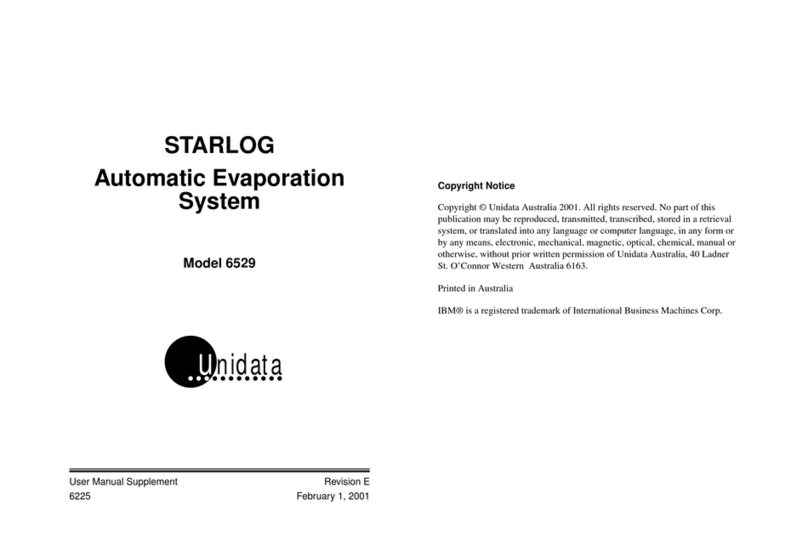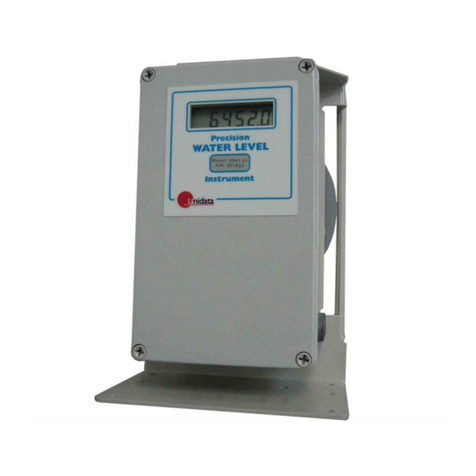
Manual – Starflow QSD Model 6527B and 6537A
Unidata Manual - 6527B and 6537A Starflow QSD User Manual 08 05 2023.docx Page 3
TABLE OF CONTENTS
Starflow QSD Model 6527B and 6537A ................................................................................1
1. Operation Mode........................................................................................................6
1.1. Operation Mode Configuring using SDI-12 protocol................................................... 6
1.2. Operation Mode Configuring using Modbus RTU protocol......................................... 6
2. Introduction ..............................................................................................................7
3. Specifications...........................................................................................................9
3.1. Velocity (Continuous Beam) ....................................................................................... 9
3.2. Depth (Ultrasonic) ....................................................................................................... 9
3.3. Depth (Pressure)......................................................................................................... 9
3.4. Temperature ............................................................................................................... 9
3.5. Electrical Conductivity (EC) – 6537A ONLY............................................................... 9
3.6. Tilt (accelerometer) ................................................................................................... 10
3.7. Power Requirements ................................................................................................ 10
3.8. Communications ....................................................................................................... 10
3.9. Environmental ........................................................................................................... 10
3.10. Physical..................................................................................................................... 10
3.11. Instrument Wiring Table............................................................................................ 11
4. Operating Principles & Measured Parameters ....................................................13
4.1 Flow Velocity Measurement...................................................................................... 13
4.2 Water Depth Measurement – Ultrasonic................................................................... 14
4.3 Water Depth Measurement - Pressure ..................................................................... 14
4.4 Temperature ............................................................................................................. 15
4.5 Electrical Conductivity EC 6537A Only..................................................................... 15
4.6 Accelerometer........................................................................................................... 15
4.7 Power Supply Voltage............................................................................................... 15
4.8 Signal Spread ........................................................................................................... 16
4.9 Received Signal Strength Indicator (RSSI)............................................................... 16
5. Taking Measurements From Instrument..............................................................17
5.1. SDI-12 Operation ...................................................................................................... 17
5.1.1. Channels Table 18
5.1.2. Measurement Command (aM!) 18
5.1.3. Additional SDI-12 Commands 20
5.1.4. Unidata Logger SDI-12 Scheme Setup 22
5.2. Modbus RS485 Operation ........................................................................................ 27
5.2.1. Reading the measured parameters via Modbus 27
5.2.2. Master Format 27
5.2.3. Slave Response Format 28
5.2.4. Standard Message Format 28
5.2.5. Modbus Registers 29






























